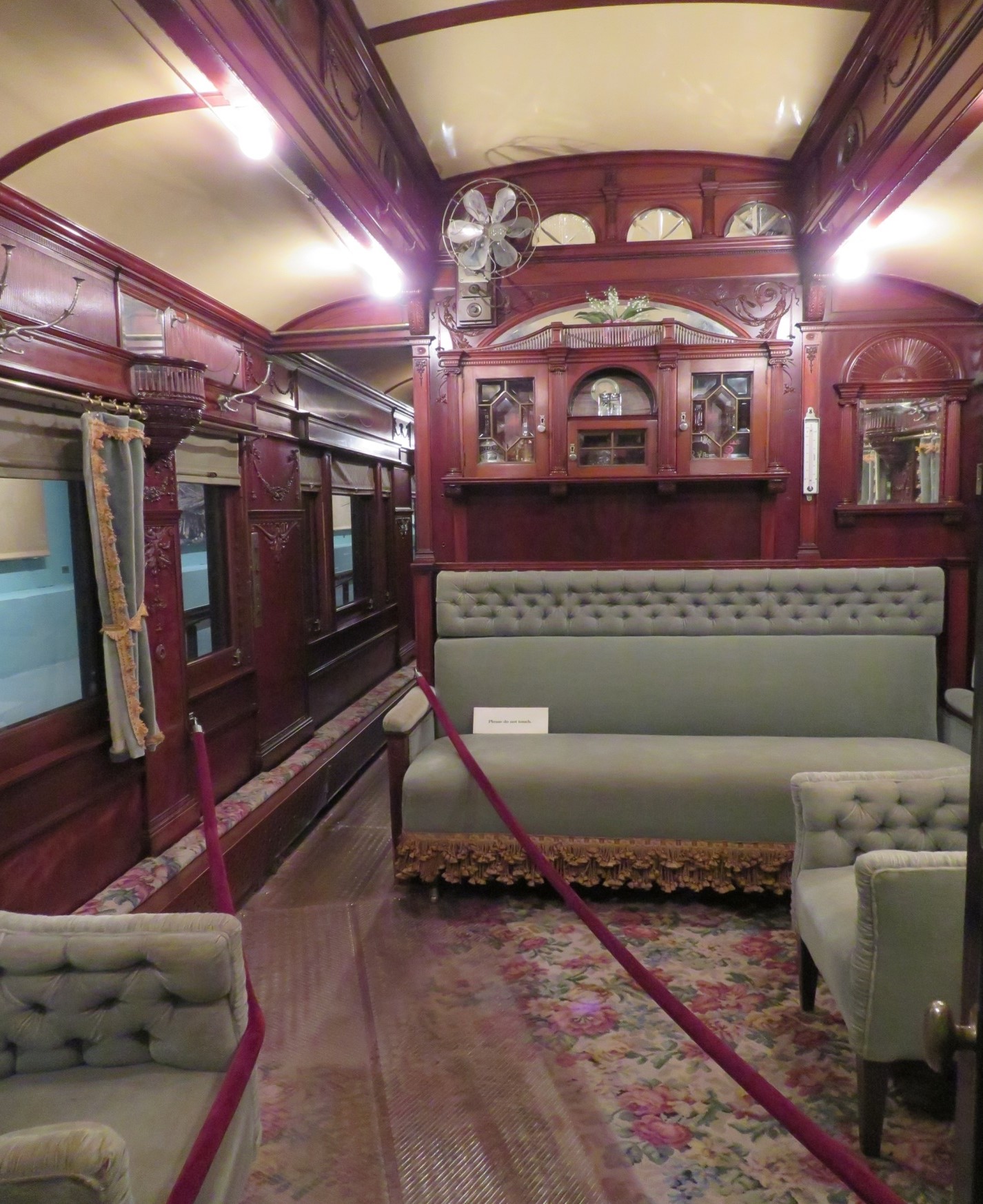
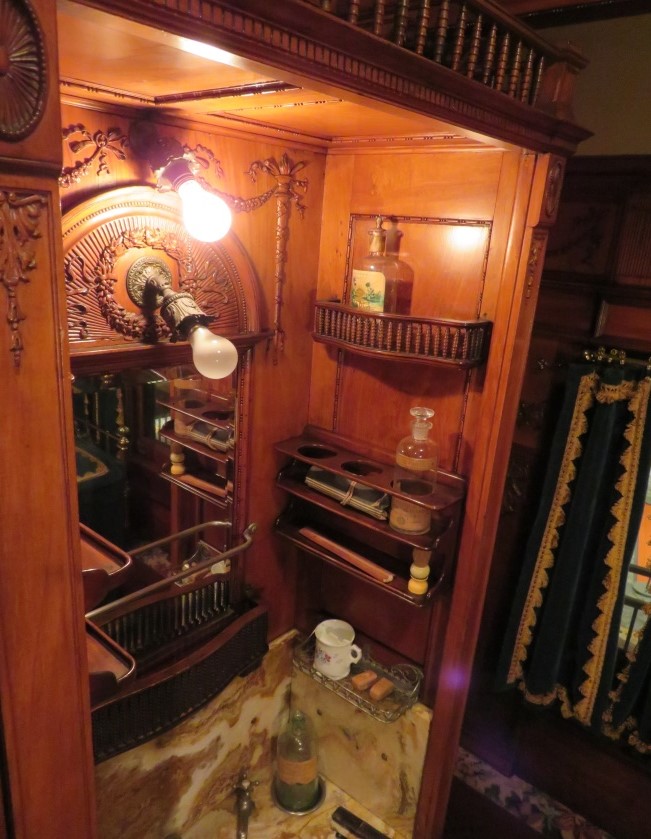
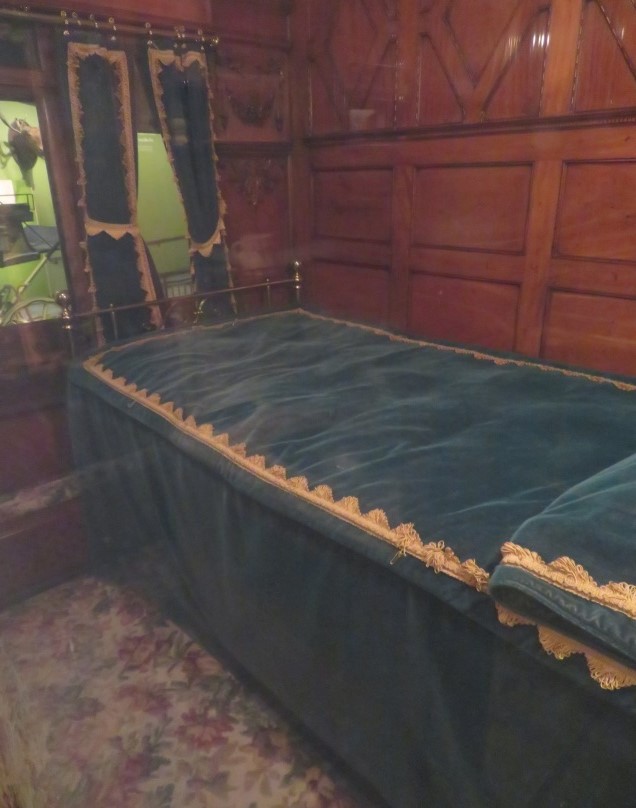
Not wanting to see every building, nor did we have the time, we focused on the main history building. Murals and large signs directed us along to read about the area’s past, explaining many aspects of the early years, and showing us the machines that were used for maple sugaring, ice harvesting, hunting and forestry. One could sit in a canoe surrounded by photographed murals for taking pictures, and a portion was dedicated to the original tribal people of the area. There were examples of log cabins that the wealthy built with the iconic style of decorative stick and tree branch inlay around doors and windows, and with hand-made furnishings.
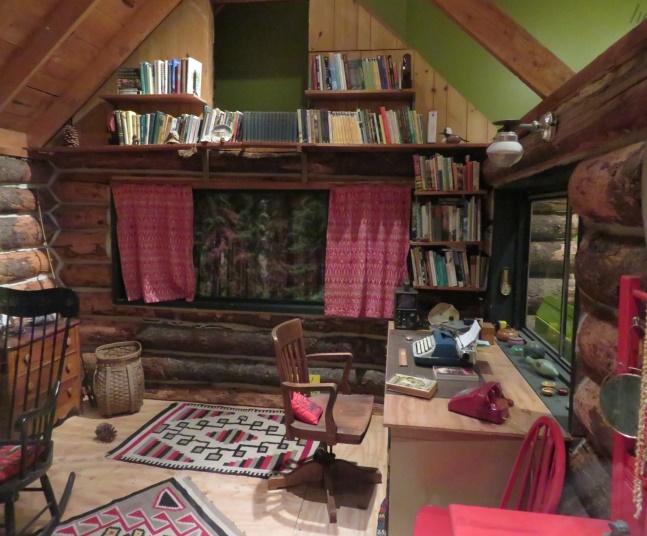
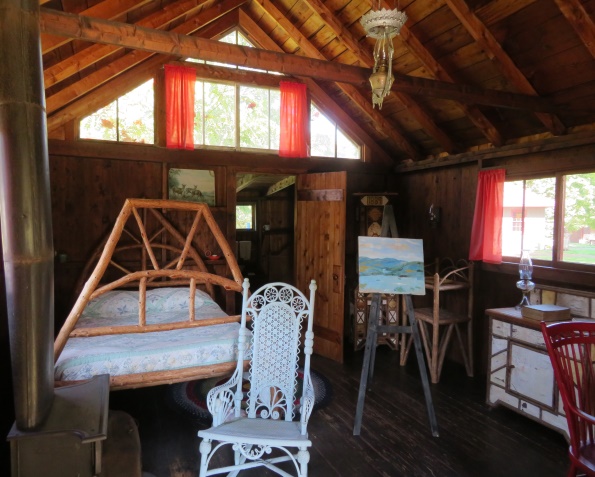
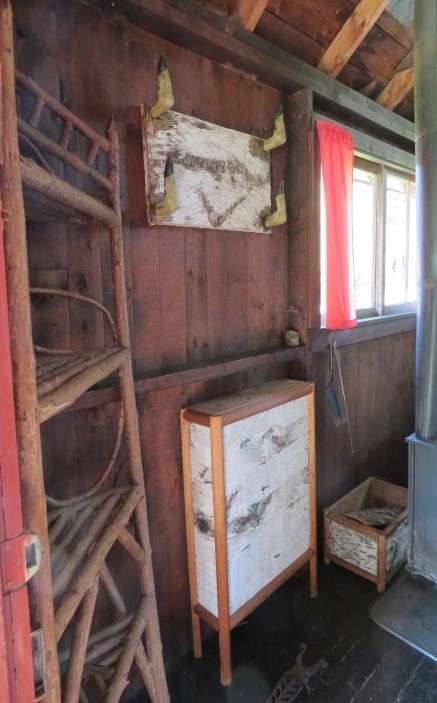
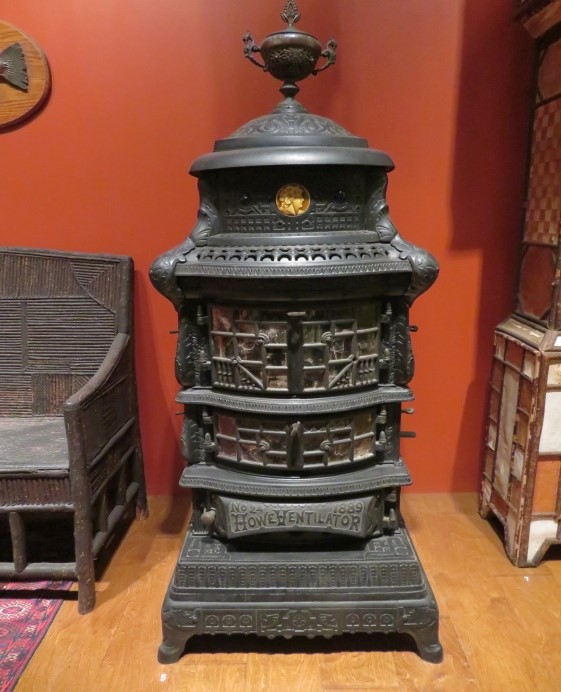
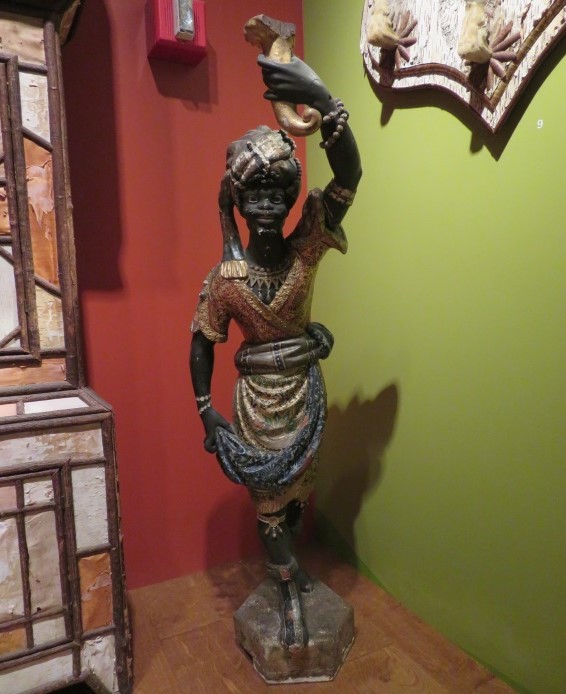
Notice the photograph with the four deer feet that acted as coat hangers. Then the heavy stoves and artistic décor that the wealthy brought with them.
There were several videos of workers speaking to the visitor, as if the viewer were part of that earlier time. The first one was a miner welcoming the viewer as a new underground iron worker about to start the day. He spoke about the dangers and low pay, and that if we failed or died from the hard work that we could easily be replaced.
Had we continued on we could have seen the boat house, where all manner of boats were used on the lake, about the woods and how they were felled and managed, and through photographs how people lived in the woods. There was Bull Cottage, built in 1901, which we did not visit, but it serves as a detailed example of how a person could enjoy the cabin life. We could have stayed longer and seen much more, but somehow the trees and the water were calling to us more than the production, so it was easy to depart and just stare out across the lake.
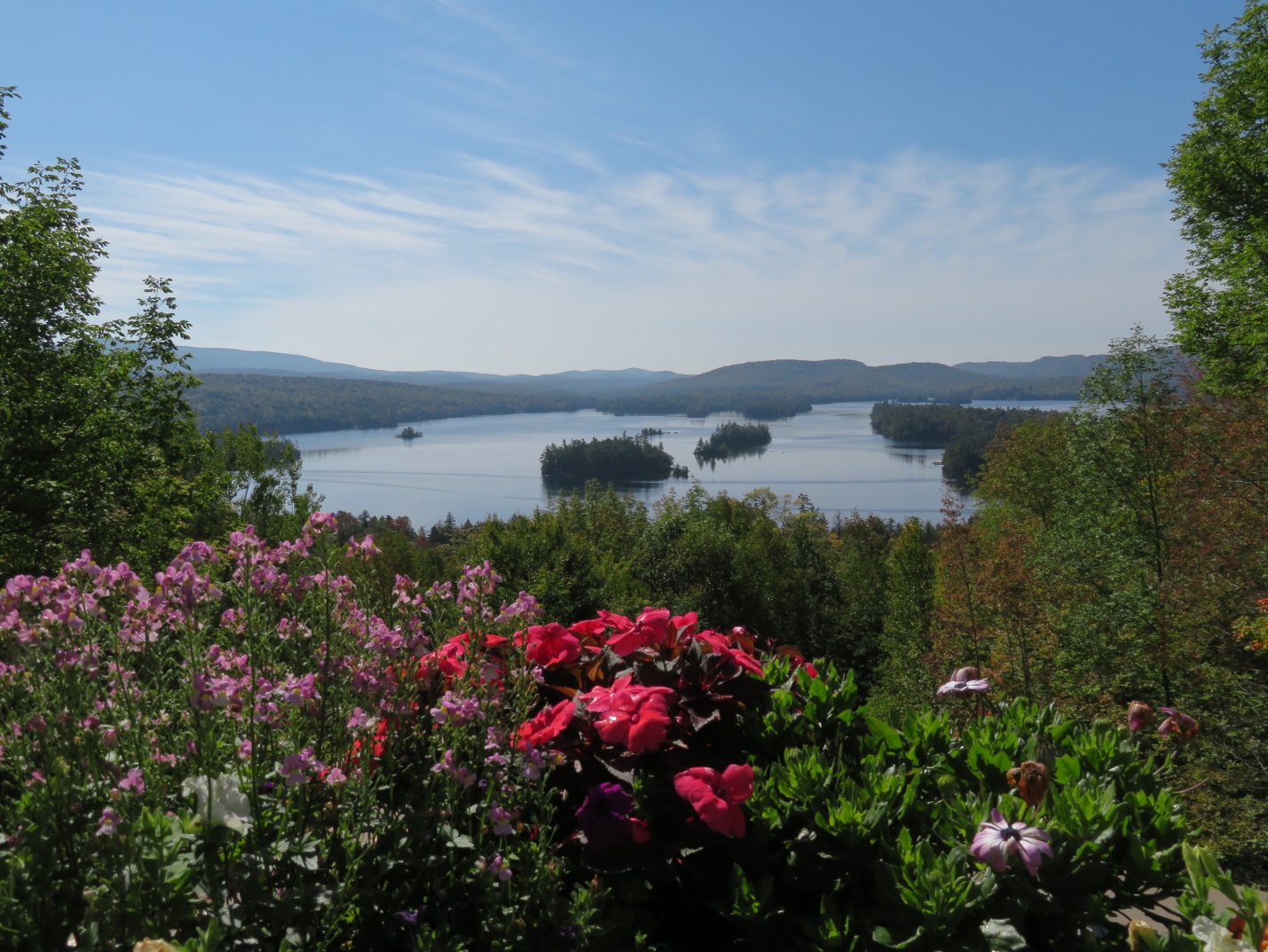
 The official website of Lita-Luise Chappell, writer on sex, magic, food, distant lands, and everyday life with articles, poetry, novels, travelogues, rituals, cookbooks, and short-stories.
The official website of Lita-Luise Chappell, writer on sex, magic, food, distant lands, and everyday life with articles, poetry, novels, travelogues, rituals, cookbooks, and short-stories.
